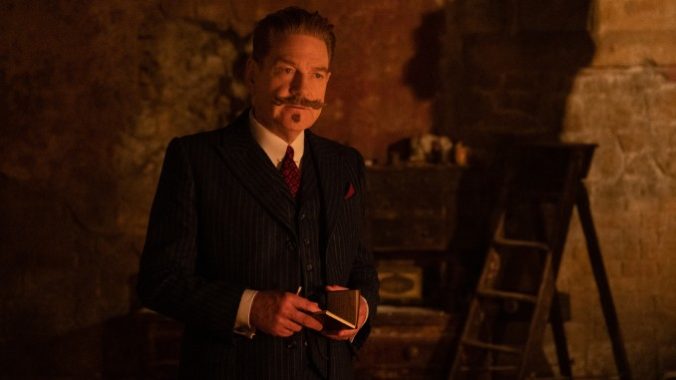Third Time’s the Charm for Creepy-Fun Whodunnit A Haunting in Venice

Almost seven years ago, Murder on the Orient Express provided audiences with their first taste of Kenneth Branagh as Agatha Christie’s beloved, mustachioed detective. A few years later, Death on the Nile would confirm the films’ franchise status and, for better or worse, cement some of the series’ signatures—most notably, its hefty budgets, star-studded casts and heavy-handed VFX landscapes. A Haunting in Venice, the third installment of Branagh’s Hercule Poirot series is here to prove an age-old expression: Third time’s the charm.
In this very loose adaptation of Christie’s Hallowe’en Party, the Who is Hercule Poirot (Kenneth Branagh), the fatigued Belgian sleuth who has traded in his days of solving the world’s greatest mysteries in favor of quiet isolation. The What is an enthusiastic invitation from novelist Ariadne Oliver (Tina Fey) to an eerie Halloween séance, a gathering that leaves one of its attendees dead and is just bewildering enough to bring the stubborn Poirot out of retirement. The When and Where is 1947 Venezia, in a decaying palazzo rumored to be haunted by the spirits of vengeful orphans. And the Why—well, that’s what they’re all dying to figure out.
Of the Poirot trilogy, A Haunting in Venice is undoubtedly the best crafted and most enjoyable film to watch. What makes A Haunting in Venice stand out against its predecessors? First and foremost, it’s Branagh’s decision to do away with heavily CGI’d landscapes and instead shoot on location in gorgeous Venetian locales, including the Laguna Veneta, Santa Maria dei Miracoli, Scala Contarini del Bovolo and Rio di Palazzo. Distracting VFX no longer cheapens the overall viewing experience, the use of real locations proving vital in grounding the film’s larger-than-life detective story and creating its overwhelming sense of dread.
In its first act, A Haunting in Venice takes its time establishing its gothic tone, favoring quiet shots of its chilling yet beautiful post-war Italian city and the uninviting labyrinths of dark, blue water that hold it hostage. Throughout the film, Venice’s iconic canals become a character of their own, violently crashing into the palazzo’s gates, as if echoing the cries of the dead children who supposedly haunt it.
In addition to the personification of its city, Venice’s strongest attribute lies in the way it uses non-narrative elements to accentuate its story, as opposed to relying solely on Christie’s narrative to create suspense. Throughout its 107-minute runtime, Branagh’s stylish direction choices and Haris Zambarloukos’ cinematography build an ominous atmosphere, one perfect for the unraveling of its puzzle-like narrative. Jarring Dutch angles, extreme wide lens and shaky tracking shots all communicate a sense of mystery and distress. Most notably, A Haunting in Venice’s bold shift in genre works to heighten Hallowe’en Party’s mysteries.
-

-

-

-

- Curated Home Page Articles By Test Admin October 21, 2025 | 3:10pm
-

- Curated Home Page Articles By Test Admin October 21, 2025 | 2:57pm
- Urls By Test Admin October 21, 2025 | 2:57pm
- Curated Home Page Articles By Test Admin October 21, 2025 | 2:55pm
-

-

-

-

-

-

-

-

-

-

-

-

-

-

-

-

-

-

-

-

-

-

-

-

-

-

-

-

-

-

-




































